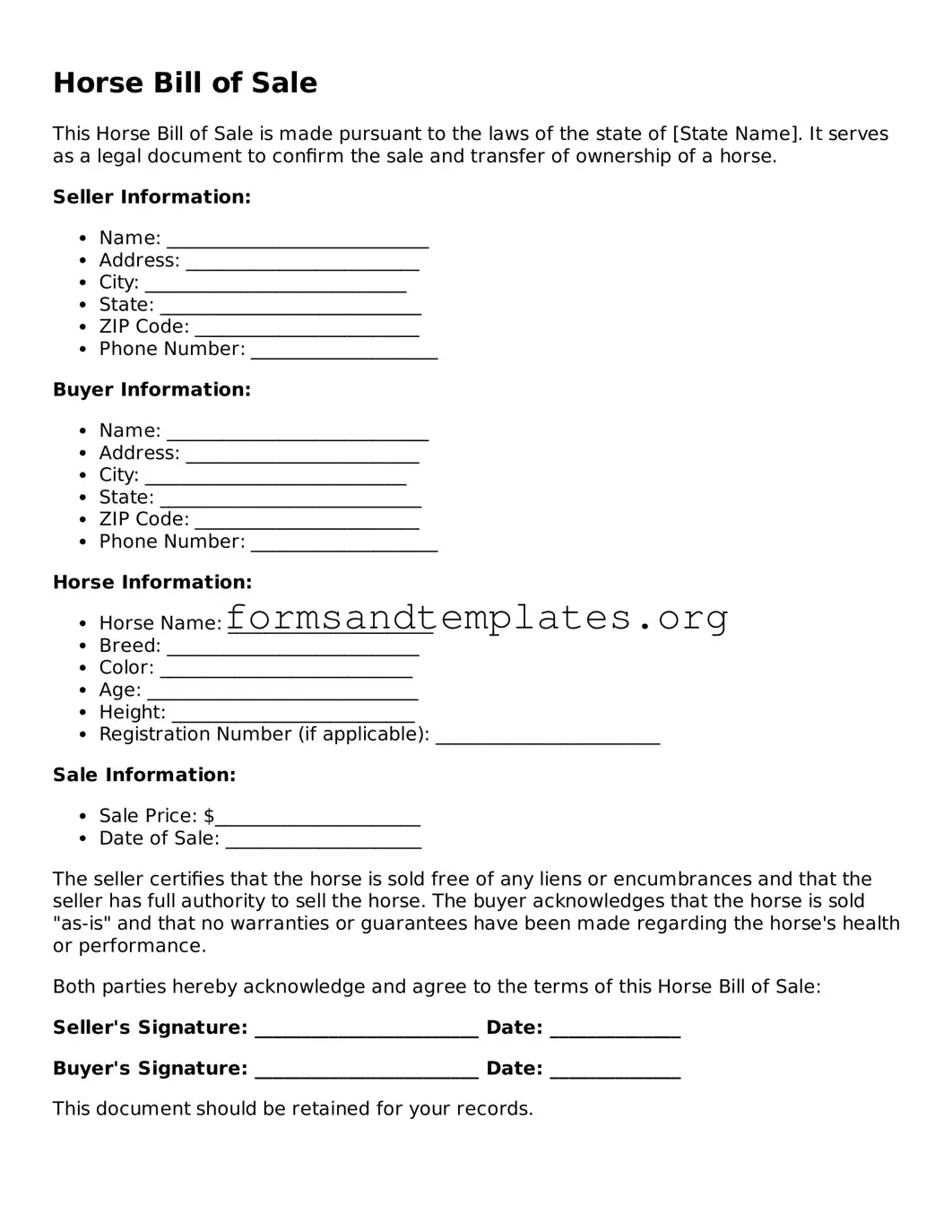What is a Horse Bill of Sale?
A Horse Bill of Sale is a legal document that records the transfer of ownership of a horse from one party to another. This form serves as proof of the transaction and outlines the terms agreed upon by both the seller and the buyer.
Why do I need a Horse Bill of Sale?
Having a Horse Bill of Sale is important for several reasons:
-
It provides legal protection for both the buyer and the seller.
-
It establishes clear ownership, which can be essential for registration and insurance purposes.
-
It details any warranties or guarantees regarding the horse’s health and condition.
A comprehensive Horse Bill of Sale should include the following information:
-
The names and addresses of both the buyer and the seller.
-
A detailed description of the horse, including breed, age, color, and any identifying marks.
-
The sale price and payment method.
-
The date of the sale.
-
Any warranties or guarantees regarding the horse’s condition.
Is a Horse Bill of Sale required by law?
While a Horse Bill of Sale is not universally required by law, it is highly recommended. Many states do not mandate it, but having this document can help prevent disputes and clarify ownership in case of legal issues.
Can I create my own Horse Bill of Sale?
Yes, you can create your own Horse Bill of Sale. However, it is advisable to ensure that the document includes all necessary information and complies with your state’s regulations. Templates are available online, which can simplify the process.
What happens if there is a dispute after the sale?
If a dispute arises after the sale, the Horse Bill of Sale can serve as a critical piece of evidence. It can clarify the terms of the sale and any warranties provided. If necessary, the parties may need to seek legal advice or mediation to resolve the issue.
Do I need to have the Horse Bill of Sale notarized?
Notarization is not typically required for a Horse Bill of Sale, but it can add an extra layer of authenticity. Having a notary witness the signing of the document may help in case of future disputes.
How long should I keep a Horse Bill of Sale?
It is advisable to keep the Horse Bill of Sale for as long as you own the horse. If you sell the horse in the future, retain the document for your records, as it may be useful for any subsequent transactions or inquiries.
Where can I find a Horse Bill of Sale template?
Horse Bill of Sale templates can be found online through various legal websites, equestrian organizations, or local agricultural extensions. Ensure that any template you use is tailored to your state’s laws and regulations.
